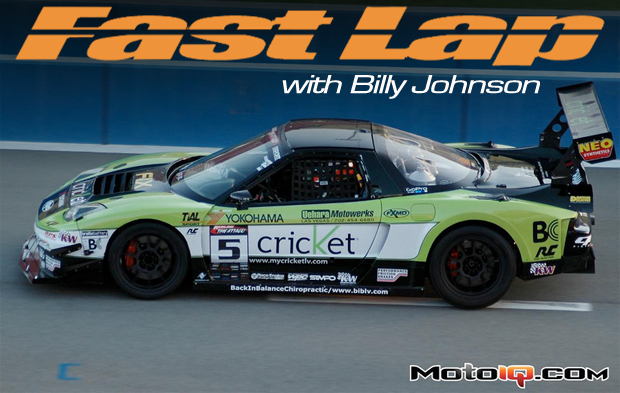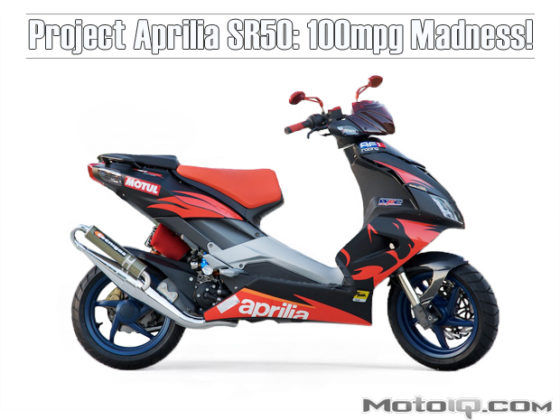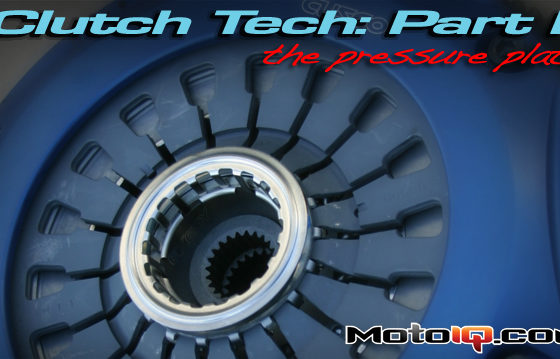
Fast Lap with Billy Johnson: Auto Club Speedway “Roval”
By Billy Johnson

Auto Club Speedway, previously known as California Speedway is a relatively new track built in early 1997 and has been the host for many racing series including NASCAR, IRL, Motorcycle, Grand-Am, and even JGTC. This D-shaped oval incorporates 11-degree banking on the front straight with 14-degree banking in NASCAR Turns 1 and 2. This track also has a series of infield road-course combinations with the largest and fastest utilizing the oval’s front straight and first two turns before going back down into the infield. This 2.88 17-turn “roval” is a common configuration for everything from Grand-Am to track days.
While two opposing camps argue whether the roval is a horsepower or handling track, there is no question that the 14-degree banked turns 1 & 2 are intimidating; especially for most who have never been on banking before.

Follow me through a fast lap around ACS:
Turn 1 (NASCAR Turn 1)
After crossing the start/finish line while on the front straightaway, speeds can reach over 170mph before entering NASCAR Turn 1. Many variables determine the ideal line through this corner and through Turn 2. In a low powered car like a Spec Miata it is possible to be full throttle through the entire banking while hugging the inside line. In this case, traveling a further distance to make a larger radius with a defined apex is not necessary. In faster cars it is more important to effectively use the banking with a proper line and apex to maximize mid-corner speed and the time on full throttle.
A common mistake I see in drivers on the banking is turning-in too early. While it’s more comfortable to stay as far away from the wall as possible, getting down to an early apex and hugging the apron through the entire banking pinches off the corner. Seconds can easily be found here with a proper line.
Hug the wall on the front straight until NASCAR Turn 1 actually starts. Turn-in slowly and patiently creep the car down to about mid-track. Any attempt to minimize the time spent off-throttle will greatly improve mid-cornering speeds. Since lifting all the way off the gas greatly slows the car down especially at these speeds, staying at least part-throttle yields big time improvements.
Turn 2 (NASCAR Turn 2)
 In the middle of the banking (still staying mid-track), Turn 2 technically starts. At this point it is crucial to keep your eyes up and look far into the corner. This will also reduce the sensation of speed. From here it should almost be possible to see the end of Turn 2 where the wall straightens to the back straight. Once you can see this, tighten your hands and apex the corner in the middle of Turn 2 while squeezing to full throttle. [Big-picture: this is ¾ of the way through the entire banking]. Slowly unwind the steering wheel and track-out to the wall as Turn 2 ends onto the back straight.
In the middle of the banking (still staying mid-track), Turn 2 technically starts. At this point it is crucial to keep your eyes up and look far into the corner. This will also reduce the sensation of speed. From here it should almost be possible to see the end of Turn 2 where the wall straightens to the back straight. Once you can see this, tighten your hands and apex the corner in the middle of Turn 2 while squeezing to full throttle. [Big-picture: this is ¾ of the way through the entire banking]. Slowly unwind the steering wheel and track-out to the wall as Turn 2 ends onto the back straight.
(Note: My in-car footage is not an ideal example since I turned-in too early for Turn 1 and hugged the apron. Because my RF tire was bottoming out into the fenderwell, an earlier turn-in and slower cornering speed minimized this bottoming-out. In Turn 1 and the entry of Turn 2, stay higher than my in-car footage and stay closer to mid-track until you tighten the wheel to apex Turn 2).
Turn 3 (Transitioning off the banking into the infield)
Find a reference point to consistently judge your braking. Due to how fast the car is traveling before this braking point, a lot of initial brake pressure can be applied to get the car slowed down in the shortest distance possible. I often see many drivers not take full advantage of their brakes by braking too lightly in the first half of the braking zone. A lot of time can be gained by braking later with more initial brake pressure.
Once the car is slowed down, it is important to trail off the brakes to a late apex. Make sure to over-exaggerate the late apex because a better line setting up for the exit of Turn 4 is far more important than more cornering speed through Turn 3. Turn 3 is thus a “throw-away” corner or a “compromise corner”. Do not track-out or place the car any further than the middle of the road. It would be better to be left-of-center to have a better line and late apex for Turn 4.
Turn 4 (Exiting down a decent straight)
Immediately after Turn 3, late apex turn 4 and un-wind the steering as you apply throttle. A straighter line from apex to track-out will allow you to put power down much more effectively. Many drivers turn-in too early and have the car loaded up heavily all the way until track-out and aren’t able to get to full throttle until track-out. A later apex will yield time improvements.



